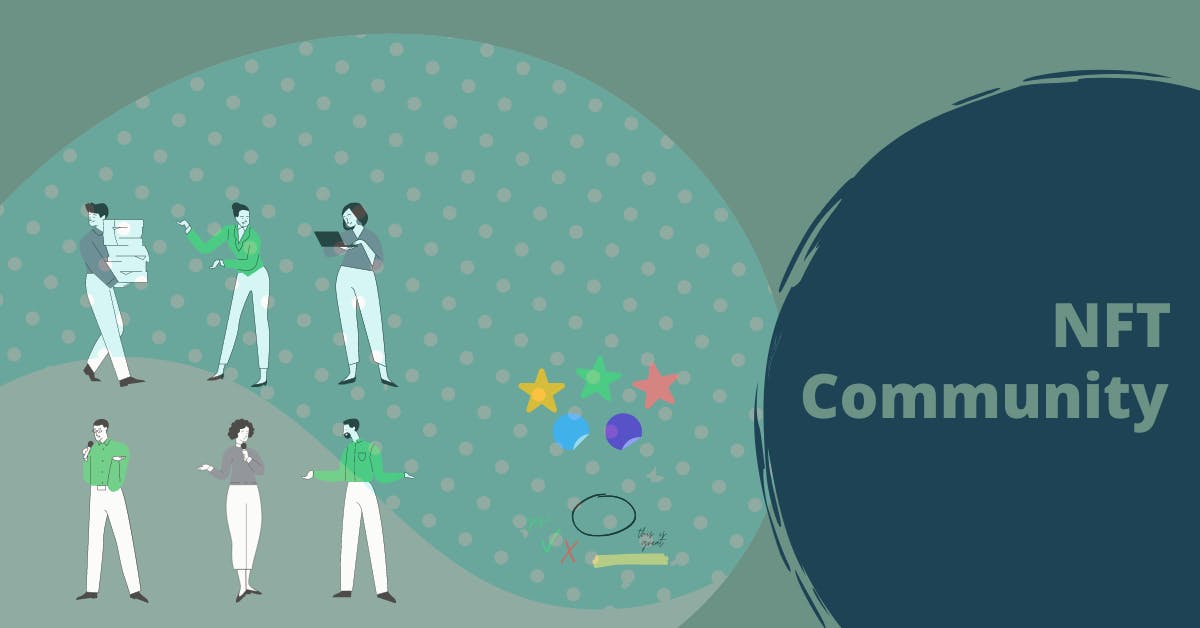Looking to build your own NFT community? Here are some tips to get you started!
Table of contents
No headings in the article.
Are you looking to build your own NFT community, if yes then please read this article carefully? NFTs are quickly becoming the hottest digital collectibles on the market today, with more and more people looking to get in on the action.
If you’re one of these people, then! Building an NFT community can be lots of fun, but it also requires a lot of work and dedication. Here are some tips that will help you build your own NFT community to increase your chances of success!
Now, you are thinking about what is NFT community, and here is the answer.
What is an NFT community?
A Non-Fungible Token (NFT) is a digital asset that is unique and has its own set of rules. An NFT community is a virtual place where users can post items for trade, and where others in their community can bid or buy these digital assets from them.
These communities have been popping up as decentralized stores for digital assets, typically unique, digital art. If you're looking to start your own nft community, here's a step-by-step guide on how to get going.

The Four Elements of an NFT Community: Each non-fungible token community will have its own requirements, but there are four key elements that everyone needs:
Create Digital Assets - Make sure you’re ready with all of your images, files, etc., before moving forward with your platform launch
Authenticate Assets - Users need to be able to authenticate what they’re buying or selling; make sure everything checks out
- Manage Transactions - Ensure there’s trust between all parties during transactions
- Build Your Virtual Economy - Make sure your users have plenty of ways to spend their hard-earned tokens What Else You Need To Know
There are plenty of other things you should consider when building an NFT community. It’s important to keep in mind that not all platforms support NFTs natively, so it might take some custom coding to add support for them.
Also, it’s important to remember that each transaction requires gas fees,so make sure there are enough fees built into each transaction so that users don't end up losing money due to insufficient gas fees.
Why should you create an NFT community?
Creating an NFT-based community gives players more than just a place to play, it's also a central hub where like-minded individuals can connect and collaborate.
But if one thing is clear, it's that successful communities don't happen by accident; they're built by communities of their own, which means there's no real secret recipe for creating a great community. Rather, it requires careful planning and consideration of all factors involved with your game's design.
For instance, in Cryptokitties: Breeders Club (CCBC), Kitties not only interact with each other but also come together to form exclusive limited-edition collections based on custom sets made by top breeders for collectors.
There are a few things you have to keep in mind while creating your NFT community, here are there
Define your audience
The first step in building an NFT community is defining who your ideal members are. Once you know who they are, creating and launching events will be easier.
For that, you have to create a space for a pro gamer. And tell your audience to attendees events to feel like you are there for them and that we have their best interests in mind.
To do that, we reached out directly to influencers on Twitch as well as a professional gamer asking them if they would help us put together an event that met their needs and was something they’d be interested in joining and supporting.
Get Active on Social Media
The social media networks of today, such as Facebook and Twitter, allow users to start a virtual community. If you’re looking for ideas for how to start an NFT Community, look no further than these two powerhouse platforms.
Read their Terms of Service so that you can learn more about what is allowed (and not allowed) when using their services.

For example, on Twitter, prohibited forms of content include direct or indirect violent threats, specific threats or calls for violence against protected groups (e.g., racial slurs), and graphic descriptions of violence or physical harm against others.
Take note: these guidelines may vary from site to site and may change at any time without notice.
Stay Positive and Engaged
Building a community around a blockchain is a lot of work, and it can seem overwhelming at times. At its best, though, a thriving NFT Community can feel like being part of something magical, having real ownership over something in life, and being free from centralized powers that control so much of our society.
It's exciting to be able to help other people realize those possibilities too—but remember not to let yourself become cynical or burned out when they don't live up to expectations. Be positive, focus on helping others, and stay engaged in your local NFT community.
Start Creating Quality Content Regularly
You can’t expect other people to find and join your NFT community unless you put out good content on a regular basis. Even if it’s only an hour or two each week, that hour or two each week can be put towards generating quality content.
You don’t have to start blogging full-time; simply post one or two thoughtful and valuable posts per month. Then, once every few months, shoot for four solid weeks of consistent posting. Your followers will appreciate having fresh content every so often even if they wish it was available more frequently!
Think about how useful it would be if someone else published engaging, interesting articles on a regular basis—and helped solve problems within their niche—and then encouraged others in your space by sharing that information with them.
Road map for your community
Building an active and vibrant NFT community requires thought and planning. Just as each stage of a project needs a plan, you need a road map for your in-game community.
Before kicking off official beta testing, draw up an outline that provides just enough detail that you can keep it in front of you throughout development, but not so much that it inhibits open-ended play testing.
It’s great to know exactly what features and functionality will be available at launch (and on what schedule), but there will also be questions—what happens if certain features don’t have as much user uptake as others? How do we foster wider adoption of existing functionality?—that can't possibly be anticipated ahead of time.
The best way to answer these types of questions is by getting people involved from day one and keeping them involved every step of the way.
In fact, building an NFT community is about more than just building your game; it's about getting people excited about blockchain gaming overall.
Don't lose sight of that fact! It's tempting to obsess over your game during the early stages because you're invested in its success; however, when thinking about how to start a new business from conception to execution always remember: No matter how cool or revolutionary your game may be, nothing will sell itself.
People must understand why they should care before they'll give you their money.
Conclusion
If you’re just getting started with NFTs, try a few of these strategies and have fun! If you’re looking for more involved ways to create, grow, and expand an NFT community, follow some of these extra steps: Incorporate (get legal assistance from Rocket Lawyer); learn how money transmission works in your state; start learning about marketing strategy and how to pick up followers on popular networks like Instagram and Twitter.
Before getting started with any type of real-money trading or business model, work out all legal details. Finally, think about how each new blockchain game or application fits into the overall crypto market.
